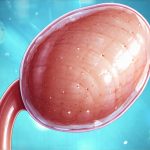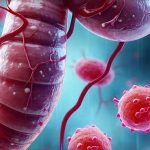Cystitis, often understood as a urinary tract infection (UTI), is a common ailment affecting millions globally, predominantly women. Characterized by inflammation of the bladder, it manifests through uncomfortable symptoms like frequent urination, a burning sensation during urination, and lower abdominal discomfort. While bacterial infections, particularly Escherichia coli (E. coli), are overwhelmingly recognized as the primary cause, growing research suggests that other factors, including allergic reactions, may play a significant role in certain cases of cystitis or contribute to its chronic recurrence. Understanding these alternative pathways is crucial for accurate diagnosis and effective management beyond traditional antibiotic treatments.
The conventional view associates cystitis almost exclusively with bacterial invasion. However, this doesn’t fully explain why some individuals experience recurrent infections despite appropriate antibiotic therapy, or why others develop symptoms resembling cystitis without detectable bacteria in their urine – a condition known as sterile cystitis. This is where the potential link between allergies and bladder inflammation begins to gain traction. Allergies involve an overreaction of the immune system to otherwise harmless substances (allergens), leading to inflammation. It’s increasingly recognized that this inflammatory response, triggered by allergens, can manifest in various ways throughout the body, including within the urinary tract. Exploring this connection offers new avenues for understanding and addressing a complex condition.
The Allergy-Cystitis Connection: A Deeper Look
The concept of allergies contributing to cystitis isn’t entirely new, but it’s been historically underestimated. What we are discovering is that allergic reactions can initiate or exacerbate bladder inflammation through several distinct mechanisms. One key aspect revolves around mast cells. These immune cells release histamine and other inflammatory mediators when exposed to allergens. In individuals susceptible to allergies, mast cells in the bladder wall may become activated by specific triggers, leading to symptoms mimicking a bacterial infection. This activation doesn’t involve an actual pathogen; rather, it’s the body’s own immune response causing the problem.
Furthermore, allergic reactions can compromise the gut microbiome – the diverse community of microorganisms residing in our digestive system. A disrupted microbiome is linked to increased susceptibility to UTIs and bladder issues because a healthy gut plays a vital role in overall immune function and protecting against harmful bacteria. Allergies often necessitate dietary restrictions or medications that further impact the gut flora, potentially creating a vicious cycle. It’s also important to note that some individuals may develop allergies to substances used in feminine hygiene products or even certain components of urinary catheters, leading directly to bladder irritation.
The challenge lies in identifying these allergic triggers. Common allergens implicated in cystitis-like symptoms include: – Food sensitivities (dairy, soy, gluten, citrus fruits) – Environmental allergens (pollen, dust mites, mold) – Chemical irritants (fragrances in soaps, detergents, or feminine hygiene products) – even certain fabrics. Diagnosing allergy-related cystitis requires a thorough investigation, often involving elimination diets, allergy testing, and careful symptom tracking to pinpoint the specific offending substances.
Identifying Triggers & Management Strategies
The diagnostic process for allergy-related cystitis can be complex and often necessitates collaboration between healthcare professionals – urologists, allergists, and potentially dieticians. Traditional urine cultures might come back negative, leading to a misdiagnosis of bacterial infection. This is where a detailed patient history becomes paramount, focusing on potential allergic triggers, dietary habits, environmental exposures, and product usage. Allergy testing – skin prick tests or blood tests (IgE antibody tests) – can help identify sensitivities but aren’t always conclusive for bladder-related symptoms as they assess systemic allergies rather than localized reactions within the urinary tract.
An elimination diet is often a valuable step in identifying food triggers. This involves removing suspected allergens from the diet for several weeks and then gradually reintroducing them one at a time, carefully monitoring for symptom recurrence. Maintaining a detailed food diary during this process is essential. Beyond dietary changes, minimizing exposure to environmental allergens – using air purifiers, dust mite covers, and avoiding peak pollen seasons – can also be beneficial. For those with sensitivities to chemical irritants, switching to fragrance-free and hypoallergenic products is crucial.
Managing allergy-related cystitis isn’t just about avoidance; it’s also about supporting the immune system and restoring gut health. Probiotic supplements can help rebuild a healthy microbiome. Anti-inflammatory therapies, under medical guidance, might be considered to reduce bladder inflammation. Importantly, self-treating with antibiotics is not recommended if an allergic component is suspected, as this can further disrupt the microbiome and contribute to antibiotic resistance.
Exploring Food Sensitivities & Cystitis
Food sensitivities, unlike true food allergies which involve IgE antibodies and immediate reactions, often manifest more subtly and are harder to pinpoint. They don’t necessarily cause a rapid, life-threatening response but can trigger chronic inflammation that contributes to bladder symptoms over time. Common culprits include dairy, soy, gluten, citrus fruits, artificial sweeteners, and caffeine. The link between food sensitivities and cystitis is thought to involve several mechanisms: – Increased intestinal permeability (“leaky gut”) allowing allergens to enter the bloodstream and trigger an immune response. – Histamine intolerance – certain foods can elevate histamine levels in the body, exacerbating inflammation. – Cross-reactivity – the immune system may mistakenly identify proteins in food as similar to those found in bladder tissues, leading to an autoimmune-like reaction.
Identifying food sensitivities often requires a carefully designed elimination diet and close symptom monitoring. It’s crucial to work with a registered dietitian or healthcare professional who can guide you through this process safely and effectively. A food diary is essential for tracking what you eat and how it impacts your symptoms. Reintroducing foods one at a time allows you to pinpoint the specific triggers causing issues. Remember that sensitivities can change over time, so periodic reassessment might be necessary.
The goal isn’t necessarily permanent elimination of all triggering foods but rather identifying those that significantly impact your bladder health and learning to manage them accordingly. This may involve reducing consumption or finding alternative options.
The Role of Mast Cells & Bladder Inflammation
Mast cells are key players in allergic reactions, residing throughout the body including within the bladder wall. When exposed to an allergen (or even a non-allergic irritant), these cells release histamine and other inflammatory mediators, causing vasodilation, increased permeability, and ultimately inflammation. In the context of cystitis, this can lead to symptoms like urgency, frequency, and pain, mirroring those of a bacterial infection – but without any bacteria present. This is often referred to as interstitial cystitis/bladder pain syndrome (IC/BPS), although allergies can contribute to other forms of bladder inflammation too.
The challenge lies in identifying what’s triggering mast cell activation in the bladder. It could be food sensitivities, environmental allergens, chemical irritants, or even stress. Some individuals with IC/BPS have shown improvement with medications that stabilize mast cells (mast cell stabilizers), suggesting a significant role for these immune cells in their condition. However, medication alone isn’t usually sufficient; addressing the underlying triggers is crucial for long-term management.
Furthermore, chronic activation of mast cells can lead to bladder wall thickening and fibrosis, making the bladder less elastic and exacerbating symptoms. This highlights the importance of early intervention and proactive management to prevent long-term damage.
Environmental & Chemical Irritants: A Hidden Source
Beyond food allergies, environmental allergens and chemical irritants present a significant, often overlooked source of bladder inflammation. Pollen, dust mites, mold spores, and pet dander can all trigger allergic reactions that indirectly impact the urinary tract. These allergens typically enter the body through inhalation or skin contact but can also be ingested through contaminated food or water. However, it’s chemical irritants – found in everyday products – that often pose a more direct threat to bladder health.
Fragrances in soaps, detergents, feminine hygiene products (douches, wipes, sprays), and even toilet paper can irritate the delicate bladder lining, triggering inflammation and symptoms resembling cystitis. Similarly, certain fabrics used in underwear or clothing may contain dyes or chemicals that cause irritation. Identifying and eliminating these irritants is often a crucial step in managing allergy-related cystitis. Switching to fragrance-free, hypoallergenic products, wearing cotton underwear, and avoiding harsh cleaning agents can all make a significant difference.
The key is to be proactive and mindful of the substances you’re exposing your body to. Reading product labels carefully and choosing natural alternatives whenever possible are essential steps in protecting your bladder health. It’s also important to consider that even seemingly innocuous products like bubble bath or scented candles could contribute to irritation, especially for individuals with sensitive bladders.
Disclaimer: This article is intended for informational purposes only and does not constitute medical advice. Always consult with a qualified healthcare professional for diagnosis and treatment of any health condition.





















